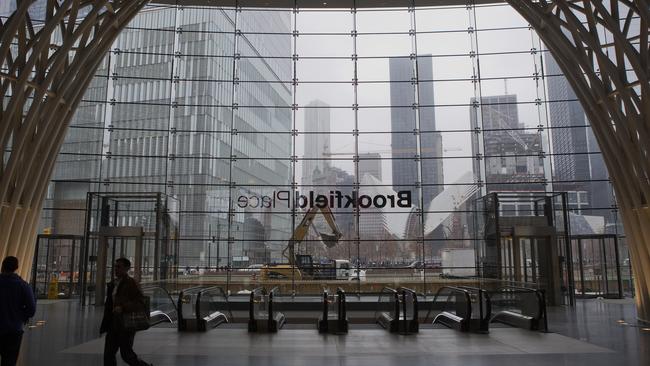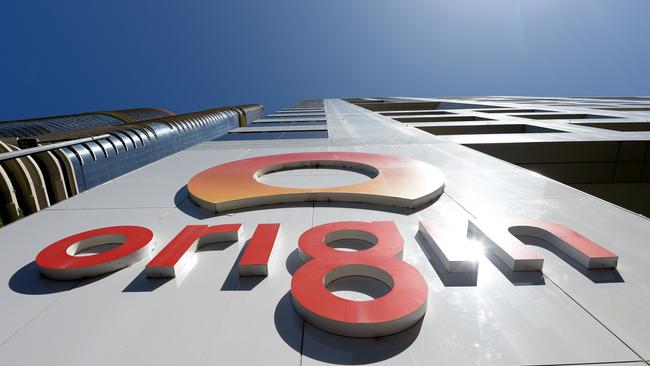Crisis at Healthscope hospitals down to Canadian investment giant Brookfield’s strategy
Buy the business, sell the furniture and make out like barbarians – that’s the Brookfield playbook which has left Australia’s second-biggest hospital operator in a mess.

Borrow big, buy the business, sell the furniture and make out like barbarians. That’s the Brookfield playbook in action with Australia’s second-biggest hospital operator, Healthscope.
That one of the world’s biggest asset managers is now crying poor after overpaying and insisting its banks take back Healthscope is comical. But the $US1 trillion ($1.6 trillion) Brookfield is deadly serious as it attempts to cut and run from a health mess of its own making.
Healthscope’s board this week has effectively pleaded for bankers to take control of the hospitals, allowing its Brookfield-backed directors to walk away cleanly.
This is an attempt at a “soft administration” and Brookfield betting it can avoid the prospect of banks and lenders installing a receiver and losing control of the process entirely.
Each of Australia’s “big four” banks is in the consortium although always as minor players. Combined they have less than 16 per cent of the debt – and there’s a string of offshore mostly Asian-based banks, as well as several hedge funds, now buying the debt, including Polus Capital and Elliott.
There are two ways Healthscope will go – a recapitalisation, or receivership and rapid-fire sale. The second option is the most likely path.
With the debt now trading at just 40c in the dollar, Healthscope could change hands for as little as $600m. Other hospital operators are circling but there are some doubts given the level of investment needed.
If it were not for a determined AustralianSuper 16 months ago, Origin Energy would be facing the same fate.
Canada’s Brookfield was ready to carve up the energy generator, taking with it much of the infrastructure. Instead, AustralianSuper took a cornerstone stake, blocking Brookfield’s efforts to secure a buyout.
Chances are Brookfield would have cried poor all over again as the bottom fell out of the renewables market while leaving a key player of the nation’s energy market in another financial mess.

Ironically, AustralianSuper was the one that got the ball rolling with Brookfield’s hospital play. At the time, the industry fund had teamed up with Melbourne private equity supremo Ben Gray and lobbed the initial lowball bid for Healthscope. AustralianSuper was playing the long game.
But this joint bid drew out a $4.4bn rival offer from Canada’s Brookfield that topped in mid-2019 with Healthscope’s board backing the steep premium.
Healthscope’s equity was farmed out to a number of Brookfield funds. The Canadians retained 28 per cent economic control, although they kept 100 per cent voting power.
The buyout was partly financed by $2.5bn the sale and leaseback by Healthscope of 22 wholly owned hospitals properties. At the same time, Brookfield doubled Healthscope’s debt to $1.8bn.
Ultimately, Brookfield had engineered a deal whereby Healthscope had largely funded its own acquisition.
Flagship hospitals from Nepean, Knox, and Melbourne Cline in Victoria and Sydney Clinic, and Campbelltown across NSW went in the sale. These were sold in the midst of a medical property boom to two US providers, Medical Properties Trust and NorthWest Healthcare. However, it introduced hundreds of millions of dollars of long-term lease liabilities to Healthscope’s already weakened balance sheet.

Healthscope had initially got the ball rolling on a sale and leaseback before the Brookfield buyout, but it intended to retain a 49 per cent stake in the trust to keep its interests aligned.
About a year later after taking control, Brookfield offloaded the New Zealand pathology business for another $530m. This helped to recoup about half the equity that Brookfield’s funds initially put in.
Brookfield privately says it has lost all the equity it has put into Healthscope – and more – although it shouldn’t be getting off so lightly.
The sales had the impact of stripping Healthscope of any assets on its balance sheet, turning it into a capital-light operation. Under private ownership, Healthscope was essentially run for short-term gain with the underlying assumption boom time conditions would last forever.
The smartest healthcare operators know, like any emergency ward, the next surprise is just around the corner. The Covid-19 pandemic confirmed that.
Through Healthscope, Brookfield has blamed the pandemic for the current state the operator has found itself in.
There’s no doubt the freeze in elective surgery during the pandemic cut off its revenue, but hospitals received a funding windfall from governments. Coming out of the crisis, all hospitals were grappling with the pain of soaring labour costs, worker shortages and a run-up in medical supply chain costs.
However, going into the buyout, it was the bigger trends in health that Brookfield badly misread.
Healthscope, like Ramsay and other private health operators, represents an old-world model of health. The bulk of procedures are now moving to short stay, or day surgery, dramatically cutting back the multiple-day stays.
At the same time, many surgeons are diverting more business to specialist day clinics. Covid-19 wasn’t the cause of this trend, it was the accelerant.

It compounded late last year when a cash-strapped Healthscope clashed with private insurers – the source of 90 per cent of its revenue. Here, it refused to sign on to a new funding deal without a substantial step-up in payments. Patients were facing the loss of cover in Healthscope facilities, although after a bitter public dispute an agreement was struck.
Two months ago Healthscope was back talking to banks pleading for a loan freeze which it duly got. It calculated that institutions like CBA or Westpac would be loathe to put a hospital operator under, putting nurses’ jobs at risk and patient care.
At the time of the buyout, Brookfield was positioned itself as a long-term investor in Healthscope, boasting it had “constructed hospitals globally for years and therefore had a great advantage” in the space.
A little over five years later, it’s making a dash for the exit.
The Brookfield has already taken what furniture it can, while having trashed relations with Healthscope’s partners. The Canadians have attempted to position this as Healthscope’s run of bad luck, but it’s really Brookfield’s reputation that’s on the line.
PolyNovo’s change of pace
Fresh from the drama of a bloody boardroom standoff, the $1bn biotech PolyNovo has got back to its day job.
Shares on Tuesday jumped as much as 15 per cent on promising results that point to its synthetic skin burns treatment technology potentially applied to the treatment of type 1 diabetes and other applications. The breakthrough came outside the biotech, but PolyNovo was happy to ride the findings.
For almost a decade, Adelaide biotech Beta Cell Technologies has been studying the use of PolyNovo’s synthetic skin, Novosorb, as a delivery mechanism for other treatments.
Beta Cell was founded by John Greenwood, PolyNovo’s former medical lead and a developer of its Novosorb skin technology. Beta Cell’s Toby Coates delivered a paper at a conference in Copenhagen this week that published the results of a proof-of-concept study showing specialist cells can be successfully grown and take hold inside the body outside the organ where the cells are usually rejected.
Coates collaborated with Dutch giant Novo Nordisk, the drug giant behind blockbuster weight-loss drug Ozempic, which supplied the so-called “islet cells” for the study. PolyNovo supplied its NovoSorb technology for use in the study.
The usual way of treating type 1 diabetes is to transplant human islet cells into the liver, however the vast majority of these cells are lost within the first 48 hours.
Coates found the cells survive and grow within the NovoSorb graft. The method has been trialled on three patients, and they have now just passed the three-year survival with the implanted cells functioning, Coates told the conference,
The big question is whether this could be a new delivery mechanism for a range of drugs which need repeated doses – including Novo Nordisk’s Ozempic, that is delivered by a costly weekly injection. It’s important to remember in biotech that there’s a mountain to climb between the lab and the real world, including approvals.
For PolyNovo, the results are a welcome distraction. They come after the recent showdown that saw chairman David Williams emerged in charge after cutting loose former chief executive US-based Swami Raote.
The stoush was revealed by The Australian’s Margin Call column, and a search continues for a new chief. Consultancy Spencer Stuart is also running a review of the board, with the fractured relationship between Williams and Raote under the microscope.
Williams last week presented at the Macquarie Australia conference on behalf of PolyNovo.
johnstone@theaustralian.com.au






To join the conversation, please log in. Don't have an account? Register
Join the conversation, you are commenting as Logout